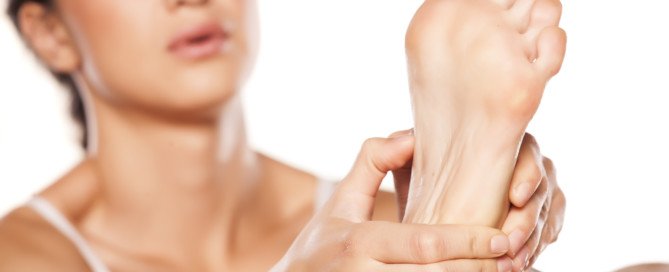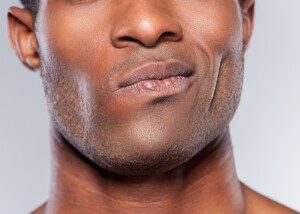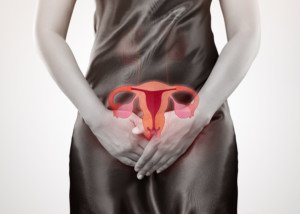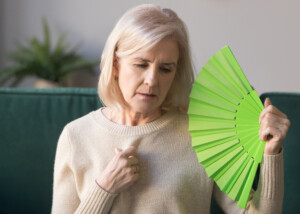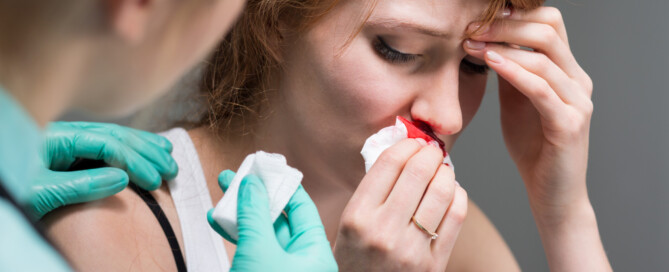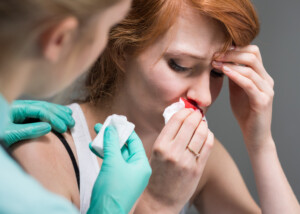Is Peeling Skin on the Feet a Sign of Diabetes?
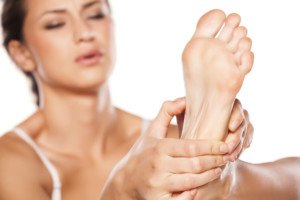
All sorts of things can go wrong with the feet from diabetes and this includes peeling of the skin.
You probably already know that diabetes often causes neuropathy (nerve damage), which results in the inability to feel pain in the foot. (more…)
How to Tell You Might Have Obstructive Sleep Apnea ??
Don’t count yourself out from having sleep apnea just because you don’t have daytime symptoms and are lean, buff and young.
Sleep apnea is one of those conditions for which millions of people could be walking around totally clueless that they have it. Including women.
Classic Symptoms of Sleep Apnea
“Snoring (especially loud enough to disturb others), unrestful sleep, morning headaches, daytime sleepiness (especially if you fall asleep inappropriately such as while driving, talking with others, at work) and of course, fatigue,” says Susan L. Besser, MD, with Mercy Medical Center, Baltimore; Diplomate, American Board of Obesity Medicine and board certified by the American Board of Family Medicine.
The person with untreated sleep apnea may be prone to napping a lot but never feeling recharged.
He or she may avoid extended driving trips because they know they’ll become drowsy behind the wheel.
The morning headaches disappear soon after getting out of bed.
You may not have the more overt signs of sleep apnea, such as snoring or excess daytime grogginess.
However, there are nighttime signs that are suspect for untreated sleep apnea.
• Suddenly awakening feeling as though your airway was cut off
• Partner describes snoring as a snorting sound
• Partner describes your breathing as labored or gasping
• Partner says you stop breathing for extended periods
• Partner says your breathing is erratic, shallow and/or comes in rapid waves between long pauses
• Repeated trips to the toilet overnight
If any of the above bullet points applies to you, you should discuss these with your physician and consider the possibility of having a sleep study — which can determine if you have sleep apnea.
In addition to the above points, do any of the following apply to you?
• Scalloped tongue*
• Can’t see throat due to high-arched palate
• Crowded teeth
• Wisdom teeth removal
• Small appearing jaw
• Receding chin
*Scalloped tongue. Check the sides of your tongue. Do you see indentations from your teeth? That indicates a small jaw.
Your dentist can discuss with you the likelihood of sleep apnea if you have any of the oral features listed above.
Dentists view the interior of mouths all day long and can give you very insightful feedback.
- Loud snoring
- Paused breathing
- Gasping while asleep
- Snorting during sleep
- Frequent urination overnight
- Restless, fidgeting sleep
- Frequent awakenings
- Waking unrefreshed
- Jaw soreness on waking
- Dry mouth on waking
- Sore throat on waking
- Morning headaches
- Poor concentration
- Reduced attention span
- Irritability or moodiness
- Brain fog
- Hypertension
- Daytime fatigue
- Frequent naps watching TV
- Dozing off when driving
 Dr. Besser provides comprehensive family care, treating common and acute primary conditions like diabetes and hypertension. Her ongoing approach allows her the opportunity to provide accurate and critical diagnoses of more complex conditions and disorders.
Dr. Besser provides comprehensive family care, treating common and acute primary conditions like diabetes and hypertension. Her ongoing approach allows her the opportunity to provide accurate and critical diagnoses of more complex conditions and disorders.
 Lorra Garrick is a former personal trainer certified through the American Council on Exercise. At Bally Total Fitness she trained women and men of all ages for fat loss, muscle building, fitness and improved health.
Lorra Garrick is a former personal trainer certified through the American Council on Exercise. At Bally Total Fitness she trained women and men of all ages for fat loss, muscle building, fitness and improved health.
What Is the Black Debris in Gum Where Tooth Was Removed?
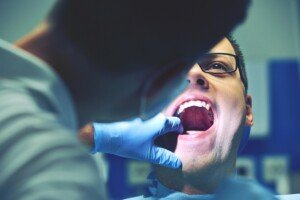
You’ll be surprised to learn that the gum debris or “gunk” where the tooth was pulled isn’t really black—but dark red because it’s blood. (more…)
Can a Sleep Study Miss Sleep Apnea?
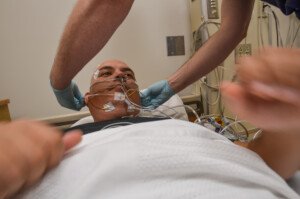
Don’t get your hopes up if your first sleep study is negative for sleep apnea.
Better have a second sleep study done because the first one may have missed it. (more…)
Best Way to Learn to Sleep on Your Side: Forget Tennis Balls!

There’s a sure-fire way to stay on your side during sleep: no sewn-in tennis balls, bumper wraps or alarms that awaken you every time you roll over. (more…)
Can Endometriosis Go Away On Its Own Before Menopause?

Ever wonder if your endometriosis will spontaneously go away before you reach menopause?
“Without any medical intervention? It’s quite rare for endometriosis to go away on its own before menopause except during pregnancy,” says Mylaine Riobe, MD, founder of Riobe Institute of Integrative Medicine.
Dr. Riobe, board certified in OB/GYN and integrative medicine, is the author of “The Answer to Cancer.”
Unfortunately, women — at least ones who are not pregnant — can only wish that their endometriosis will resolve on its own.
This condition, sometimes referred to as uterine polyps or uterine overgrowth, begins during the reproductive years.
Endometriosis is one of those conditions — which can cause mild to very severe symptoms — that will never spontaneously resolve in a non-expectant woman.
However, pregnancy won’t cure it, either, because once the pregnancy is over, symptomatic endometriosis will be resurrected.
“The hormones secreted during pregnancy can cause endometriosis to become dormant,” explains Dr. Riobe. So this would only be a very transient relief.
“Some natural interventions may help with endometriosis such as Chinese herbal therapies, acupuncture, homeopathy and biofeedback,” says Dr. Riobe.
“Nutritional interventions include correcting nutrient deficits, a diet rich in vegetables and fruits to encourage healthy detoxification and improved metabolism, avoiding processed foods containing pesticides, artificial hormones and antibiotics.”
These natural approaches may relieve symptoms in some women, but this is not the same as spontaneous resolution of the condition – that is, the overgrowths suddenly receding and then vanishing so that the patient is actually free of this disease.
Medical intervention including surgery can successfully treat this condition.
An Overview on Surgery for Endometriosis
As mentioned, endometriosis will not resolve on its own prior to menopause.
Surgery is often considered when other treatment are not effective or when the condition significantly affects quality of life.
The main goal of surgery is to remove or destroy endometrial tissue while preserving as much healthy tissue as possible.
One common approach is laparoscopy, a minimally invasive procedure that uses small incisions and a laparoscope (a thin tube with a camera) to view and remove overgrowth.
This method is usually employed for diagnostic purposes and treating mild to moderate cases of endometriosis.
For more extensive cases, laparotomy may be used, which involves a larger abdominal incision.
This method is considered when laparoscopy is not suitable or when the endometriosis is widespread.
Excision surgery involves cutting out the excess uterine tissue and is particularly effective for severe cases.
It aims to remove the disease completely and reduce the risk of it coming back.
In extreme cases, a hysterectomy might be performed, which involves removing the uterus and sometimes the ovaries as well.
This option is generally considered when other treatments have failed and the patient does not wish to preserve fertility.

Dr. Riobe has helped thousands of patients overcome difficult illnesses by addressing root causes, not just masking symptoms. The Riobe Method focuses on the prevention of disease, not the prevention of death from disease. She has 20+ years’ experience using integrative techniques to treat diverse patients.
 Lorra Garrick has been covering medical, fitness and cybersecurity topics for many years, having written thousands of articles for print magazines and websites, including as a ghostwriter. She’s also a former ACE-certified personal trainer.
Lorra Garrick has been covering medical, fitness and cybersecurity topics for many years, having written thousands of articles for print magazines and websites, including as a ghostwriter. She’s also a former ACE-certified personal trainer.
.
Top image: ©Lorra Garrick
Cause of Strange Depressed Feeling Right Before Hot Flash

You know as hot flash is coming in about 20 seconds because you just felt a feeling of doom and depression sweep through your body.
Suddenly, existence feels like an arduous chore that can barely be tolerated.
Though physically you feel fine, you also feel a strong sensation of BLAH about life. (more…)
Clear Sticky Fluid Coming Out of One Breast but Not Pregnant
What’s going on? There’s a sticky clear fluid leaking out of one of your breasts — but you’re not pregnant.
“About 20 to 25 percent of women experience nipple discharge at some point in their lives,” explains Mylaine Riobe, MD, founder of Riobe Institute of Integrative Medicine. Dr. Riobe, board certified in OB/GYN and integrative medicine, is the author of “The Answer to Cancer.”
How Many Times Max Can You Have LEEP Done?

A woman who’s had LEEP done a few times for CIN will naturally be worried there’s a limit to how many times the loop electrical excision procedure can be done. (more…)
Nosebleeds During Menopause: Hormones or Cancer?


